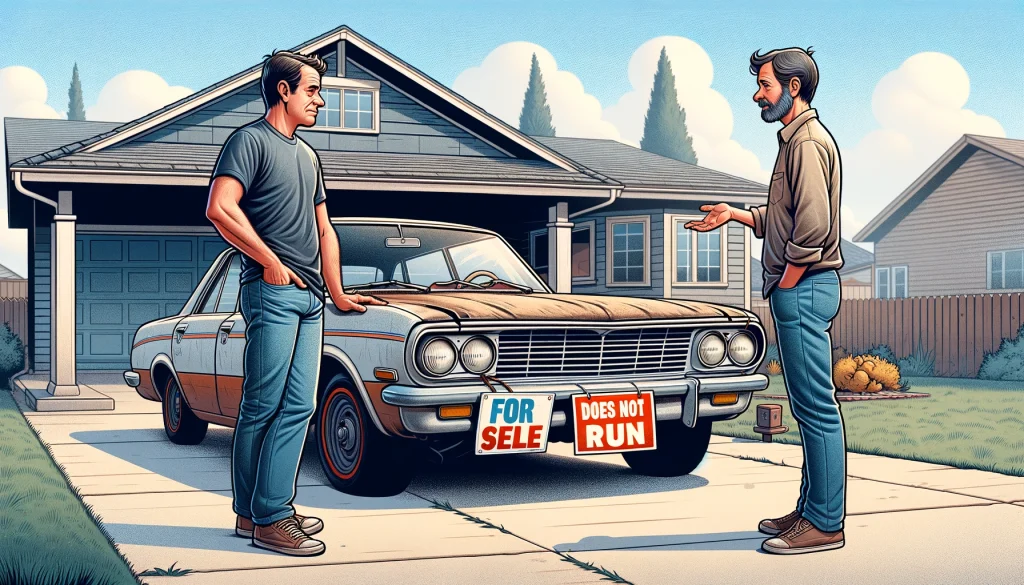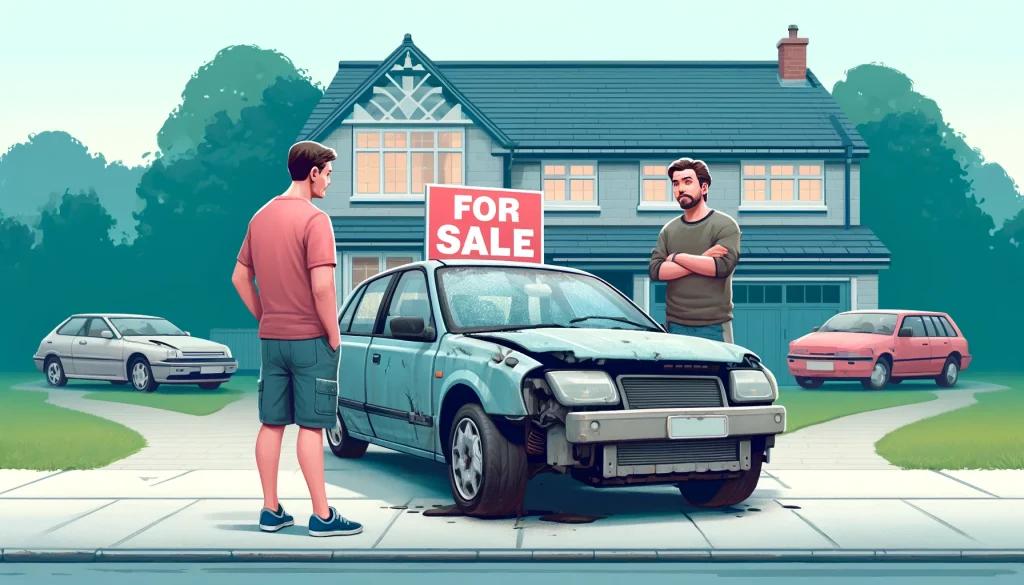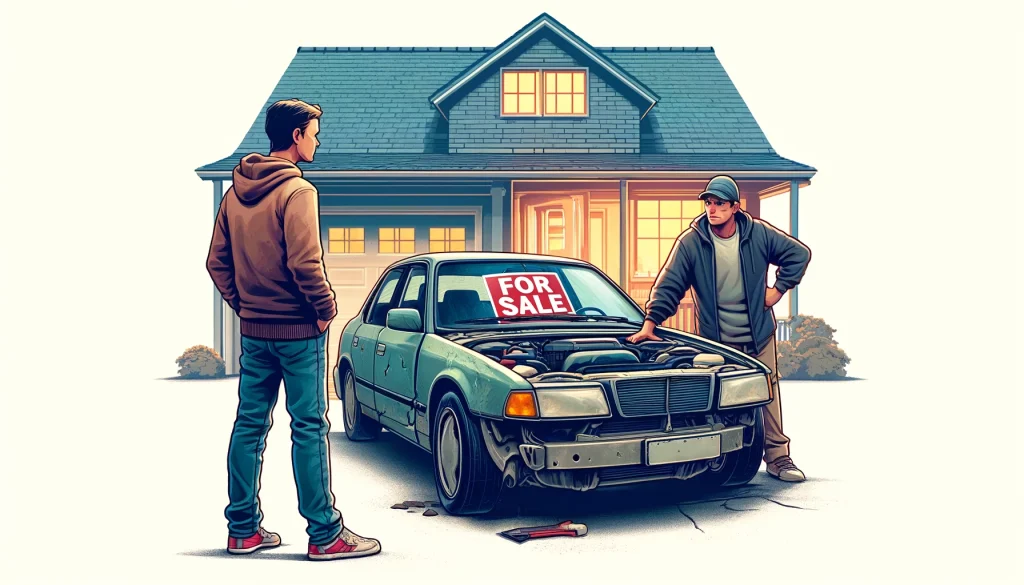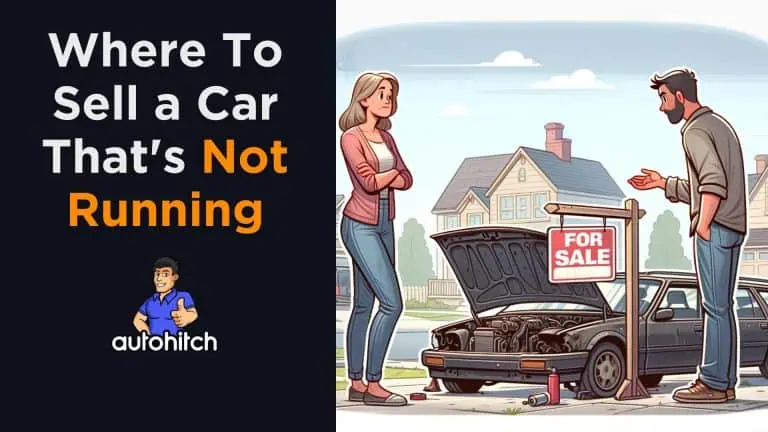If you have a car that doesn’t run, you may think it’s worthless and unsellable. However, with the right approach, you can still get money for your non-running vehicle.
In this article, I’ll guide you through the process of selling a car that doesn’t run, from preparing it for sale, to where to sell a non-running car, and finally how to negotiate with potential buyers.
Related Articles to Read:
Table of Contents

Where to Sell a Car That Doesn’t Run
There are several options for selling a car that doesn’t run, depending on your preferences and the car’s condition.
Online classifieds
Websites like Craigslist, Facebook Marketplace, and eBay Motors offer platforms for listing your car, reaching a broad audience and potentially attracting private buyers.
Junkyards and scrap yards
For cars in poor condition or with significant damage, selling to a junkyard or scrap yard could be ideal. They typically base their payment on the metal’s weight and might offer free towing.
“Cash for cars” services
Companies specializing in purchasing non-running vehicles provide quick, hassle-free transactions and often pick up the car directly from your location.
Donating to charity
If profit isn’t your priority and you’d like to support a charitable cause, consider donating your non-running car. Many charities accept such donations and provide a tax receipt.
Private buyers
This option is suitable if your car is a desirable model or has valuable parts. Be ready to handle inquiries and let potential buyers inspect the car.
How to Sell a Car That Doesn’t Run

1. Preparing the Non-Running Car for Sale
Before listing your non-running car for sale, take some time to prepare it. This will help you attract more potential buyers and get a better price.
- Clean and detail the interior and exterior of the car. Remove any personal belongings and vacuum the seats and carpets. Wash the exterior and consider waxing it to make it look more presentable.
- Take clear photos of the car from various angles, highlighting its condition. Be sure to capture any damage or rust, as well as the interior. Good photos will help potential buyers assess the car’s condition and value.
- Be upfront about why the car doesn’t run. If you know the reason, such as a blown engine or transmission issues, disclose this information to potential buyers. Honesty will build trust and save time for both parties.
- Gather all relevant documentation, including the title, registration, and any service records. Having these documents ready will make the selling process smoother and demonstrate transparency.
- Consider getting a mechanic’s estimate for the repairs needed to get the car running. This information can help potential buyers understand the extent of work required and make an informed decision.
2. Determining a Fair Price
Pricing any type of car can seem impossible, and no matter how fair it is, someone is going to tell you it’s too high. Nevertheless, it is possible to determine how to price a car that doesn’t run.
Here’s what I recommend you do:
- Research prices of similar non-running cars in your area. Look at online classifieds and local junkyards to get an idea of what others are asking for comparable vehicles.
- Set your price slightly above your minimum acceptable offer to allow room for negotiation. Keep in mind that buyers will likely try to negotiate the price down no matter what your price is. It’s pretty much a buyers natural reflex.
- Understand that you will get less money for a non-running car than you would for a functioning one. Be realistic in your expectations and consider the cost of repairs when setting your price.
3. Listing and Marketing Your Non-Running Car
To attract buyers for a car that doesn’t run you’ll need to create an attractive listing and do some strategic marketing.
Obviously by attractive I’m not referring to making a non working car look good, rather I’m talking about giving the buyers plenty of details about the car and why it doesn’t run, along with as many pictures as possible.
Stand out and gain buyer trust by appearing like you’re not hiding anything.
Steps to follow:
- Write a detailed, honest description of the car’s condition, including why it doesn’t run. Mention any recent repairs, upgrades, or valuable parts that could be sold.
- Include multiple clear photos of the car, showcasing its condition and any damage.
- Post your listing on multiple online platforms and share it on social media to reach a wider audience.
- Consider creating flyers with the car’s information and placing them in local auto parts stores, repair shops, and community bulletin boards.
4. Negotiating the Price

Once you have interested buyers, be prepared to negotiate and arrange the sale logistics.
- Expect some back-and-forth on the price. Be firm but flexible, and have a clear idea of your lowest acceptable offer.
- Decide on your preferred method of payment, such as cash or a certified check, and communicate this to the buyer.
- Determine how the buyer will retrieve the car. If it needs to be towed, decide who will be responsible for arranging and paying for the towing service.
- Complete a bill of sale and transfer the title to the new owner. Make sure to fill out all necessary paperwork and follow your state’s guidelines for selling a vehicle.
My Conclusion
Selling a car that doesn’t run isn’t easy, but if you prepare, price the car correctly, and do some strategic marketing/advertising, you will find a buyer and get a fair price for your vehicle.
Please be honest about the car’s condition, explore various selling options, and be open to negotiation.



